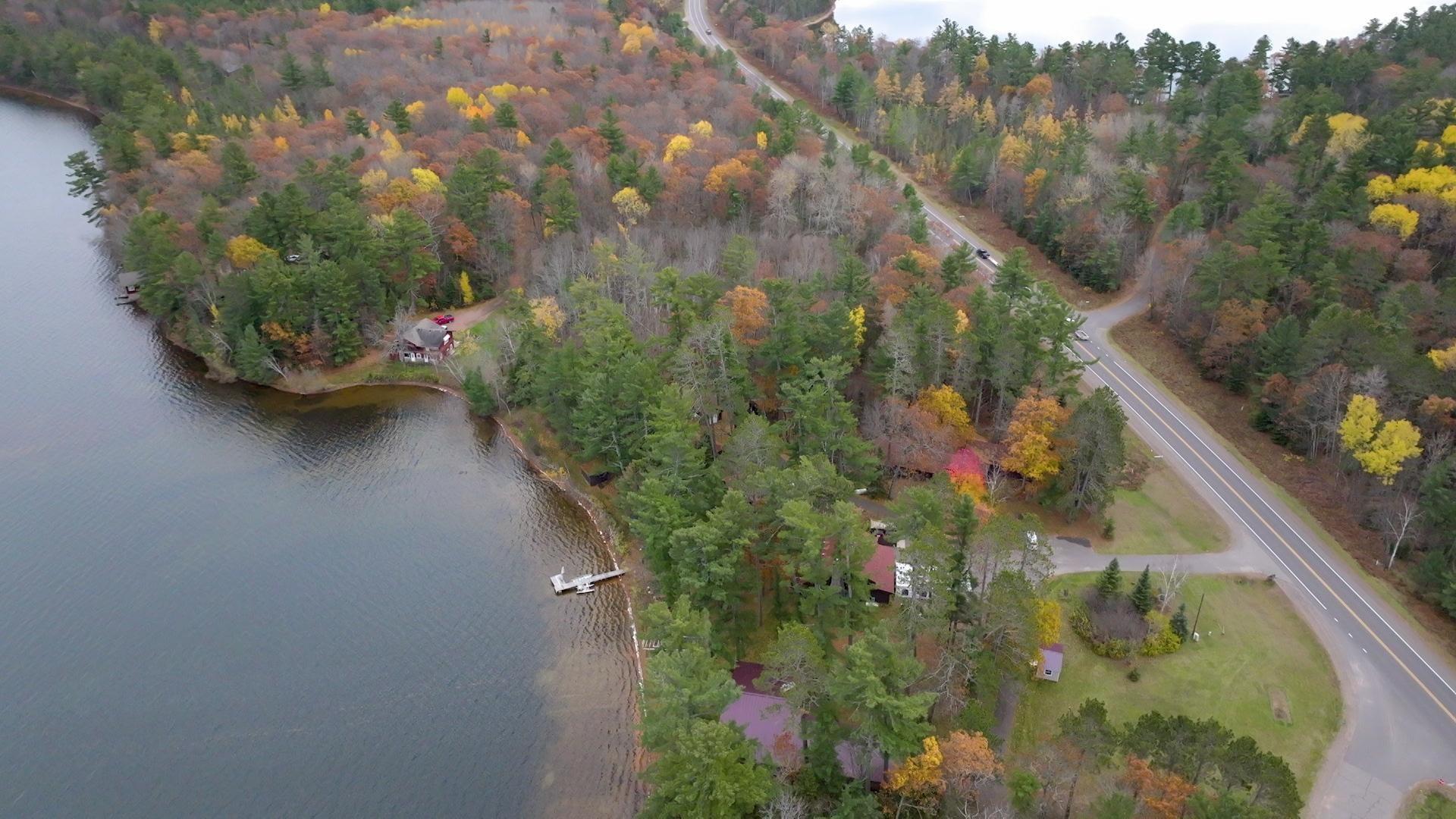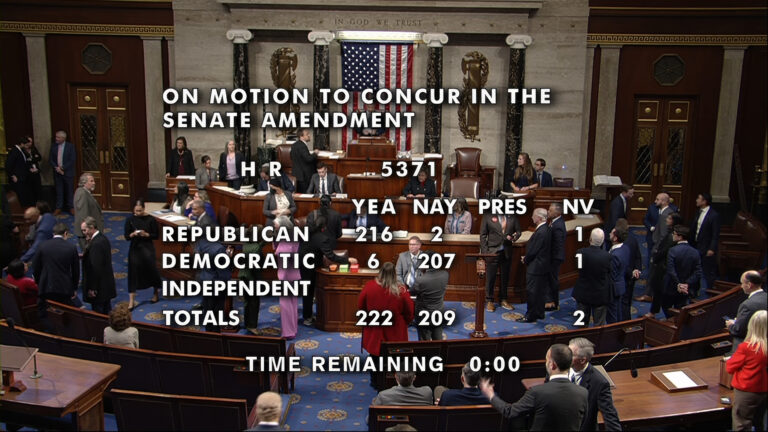Marisa Wojcik:
Welcome to Noon Wednesday, I’m Marisa Wojcik, a multimedia journalist with Here & Now, on Wisconsin Public Television. So you may have heard the term CAFO before. It stands for Concentrated Animal Feeding Operation, and basically it’s a large livestock farm operation, and so you may be wondering, why are we talking about this? Well, they’ve increased threefold in Wisconsin in the last two decades, the number of these farms, and it’s putting our state’s right-to-farm law to the test, and so Will Cushman and I have done some collaborative reporting, he’s from WisContext, thank you for being here.
Will Cushman:
Thanks for having me.
Marisa Wojcik:
So you did an in-depth story about right-to-farm.
Will Cushman:
(laughs) Yeah, I guess you could say that.
Marisa Wojcik:
And just, I want to start with what are the nuts and bolts of this law?
Will Cushman:
Sure, yeah, no, there’s quite a bit involved in the law. It was passed in the 1980s, as a response generally with a whole bunch of states passed laws around this time, as a response to urban sprawl, and increasing conflicts between agricultural operators, so farmers, and residents in nearby communities. There’s actually a case in Kenosha County that a chicken farm had been found to be a nuisance, and it was forced to close by the Supreme Court, and that kind of got the ball rolling in Wisconsin. And so what this law does is it protects pretty much all farmers including tiny operators, all the way to the largest CAFO operators in the state from most nuisance claims. Either public nuisance claims from the state, or more likely nuisance claims from their neighbors, and one thing that is often kind of a contentious issue around CAFOs, these really large livestock facilities, is the odors that they can create, and so this law essentially protects those operations from nuisance claims related to those odors, related to a whole bunch of things, but odors are one of the big sticking points with neighbors.
Marisa Wojcik:
But it goes into a bunch of different things, ’cause the definition of nuisance is, threat to public health or safety, right?
Will Cushman:
Yes.
Marisa Wojcik:
So it could be odors, it could be what else?
Will Cushman:
It could be water quality issues. There was a case actually, one of the few cases that were tried in the state. I didn’t include this in the story, but learned about it in my reporting, was the case of a cranberry farm up in the northern part of the state that had been taking water from a local lake to fill cranberry bogs, and then also releasing the water from those bogs into that same lake, at another time of the year. Neighbors in the state claim that it was polluting the lake, but it was protected under this nuisance law. So, I can tell you what is involved with getting a nuisance claim to stick in court, if you want?
Marisa Wojcik:
Sure.
Will Cushman:
So, as you said, it has to, the agricultural use or agricultural practice has to present a substantial threat to public health or safety. The statute doesn’t really go into detail about —
Marisa Wojcik:
Yeah, it’s very broad.
Will Cushman:
Yeah, what that means, and few cases have been tried in court, so it hasn’t really been tested in Wisconsin.
Marisa Wojcik:
And the law itself doesn’t necessarily automatically protect the farmer, but there’s a huge disincentive, basically, to try and bring a lawsuit against a farmer, and one of those things is because if you lose, as the plaintiff, you have a lot to lose, right?
Will Cushman:
You do, a lot monetarily, yeah. So if the plaintiff loses a case, which these cases are very difficult to prove, they are responsible for all court fees, and other potential engineering fees, what have you, of the defendant. So if it’s a long, ongoing case, that can get really really expensive, and environmental advocates say that that, in their opinion basically can give farmers impunity to drastically alter the lives of their neighbors.
Marisa Wojcik:
So what I think is really interesting is as you said at the beginning, this was drafted and passed in the ’80s, and farms didn’t look like they do now necessarily. Like, some still do, but a lot don’t.
Will Cushman:
Right.
Marisa Wojcik:
Has the law evolved at all?
Will Cushman:
It has, yeah, that’s a good point. So Wisconsin’s law has been updated a couple times, as the right-to-farm laws all around the country have tended to be updated as technologies change in the ag sector, but the major update in Wisconsin was in the mid-’90s, and that included language that made it explicit that you couldn’t sue someone for a nuisance claim if you as the neighbor, like moved in, purchased your property after whatever you say is causing a nuisance started. So after any farming practice started on that neighboring property. So essentially, what that means, in practice, is that if there’s a field that’s zoned for ag, and for the entirety of its modern history has been a crop field or a corn field or something, and say someone wants to come in and plop a huge, 6,000-head dairy CAFO right there in that cornfield, that would be a protected use under the law because there is no, what’s the word I’m looking for? There’s no, like, stop in agricultural production on that field.
Marisa Wojcik:
Sure.
Will Cushman:
So even though it’s a drastic change in what’s occurring on that field, and it will include drastic changes to neighbor’s lives, by way of odors, what have you, other things, because it’s still an agriculture use, it’s protected.
Marisa Wojcik:
And they don’t discriminate between different types of agricultural uses, whether it’s growing corn, or thousands and thousands of heads of livestock there?
Will Cushman:
Exactly.
Marisa Wojcik:
So how do regulations play into that, like aren’t regulations supposed to prevent these things from happening? Isn’t that serving the purpose of maybe what these lawsuits are trying to do?
Will Cushman:
Yeah, and the legislature was pretty explicit about it in their reasoning for this statute when it was originally written, and supporters of the law including the Wisconsin Farm Bureau Federation also point to the fact that the statute does not preclude local governments from making their own zoning decisions, so local governments still have the ability to say through zoning what land uses are appropriate in what areas. But I spoke to some people at Midwest Environmental Advocates, that’s an environmental law nonprofit in Madison who have been involved in some nuisance claims by neighbors, and they said that the state’s livestock citing law, which was passed in the 2000s, which essentially gives, so if a local government wants to regulate where a large livestock facility wants to go, they have to do it according to all these standards that the state prescribes. But a local government doesn’t necessarily have to do that, if they just decide they don’t want to regulate where livestock facilities go, then there’s no regulations there. So the Midwest Environmental Advocates say that there’s kind of this tension now. There’s at least one option that’s kind of been taken away from local control with the state, saying you have to do it our way, if you choose to regulate these farms.
Marisa Wojcik:
And if you want to add these further regulations on top of just something that’s like a DNR permit, you can’t make it stricter than what we’ve decided on a statewide level.
Will Cushman:
Yep.
Marisa Wojcik:
And the Department of Agriculture and Consumer Protection held a bunch of hearings, and a bunch of people testified all across the state. I attended a couple of those, and it seemed like there was a sentiment of, residents saying you’ve ruined our way of life, either concerns about pollution, but sometimes about smell. But farmers are saying, you know, if you don’t like the smell here, we don’t like the smell of the city, it’s subjective, and if you don’t want to live by a farm, then don’t live by a farm. And there’s also a tension between the family farm, and the industrial farm.
Will Cushman:
Mmhmm.
Marisa Wojcik:
Some of the testimony was saying, these regulations are costing us as family farmers more money and so we have to expand in size, and even though we are a CAFO, we are not “the industrial big boys,” as one farmer put it. And so that definition between what’s a family farm seems to be getting more and more hard to delineate these days.
Will Cushman:
For sure, I think that’s really fair. But at the same time, I spoke with someone for this story, Peg Scheaffer, she’s the Director of Communications for MEA, Midwest Environmental Advocates, and she got involved in that group via her own personal experience. She and her family farm in Green County, in the southern part of the state, and one of her best friend also farms nearby and found out that a cornfield across the street from her farm is gonna be turned into a really large livestock operation. And so from Peg’s perspective, she really finds the right-to-farm law problematic because she doesn’t view it as protecting farms like hers, or her best friends, who are quite a bit smaller farms, and actually views it more as pitting some of these really small farmers against either the other family farms that are growing in size, to the size of a CAFO, or to these large operations that are just starting kind of fresh on a site.
Marisa Wojcik:
And the reporting that I did was up in Burnett County, and this was an Iowa outfit trying to build what would be a 26,000-head hog farm in an area that has never seen anything like that before, and so it’s causing a lot of tension in the area where there are smaller farms, but nothing quite to that size, and it seems like something a lot of communities are grappling with. So if you live in a community that doesn’t have these siting laws, could a place come in and build whatever size farm that they want?
Will Cushman:
Assuming that they’re following all the zoning, and other local regulations, whatever they are or are not, yeah, they could, if it’s in an area that’s zoned agricultural, and has been in some sort of agricultural use, whether it’s a crop field or even used for beekeeping, or forestry, I think you could pretty easily site your facility wherever.
Marisa Wojcik:
What I thought was super interesting is in your reporting, you quoted someone as saying, “this moreso benefits livestock farms,” why?
Will Cushman:
I think that is basically just because, livestock farms are so common in Wisconsin, and often lead potentially to more tension with neighbors usually by way of odors. I think anyone who has driven past, or been near a really large livestock farm, and has been downwind from one, especially one that has a large manure storage facility, maybe it’s open air, can attest to the fact that they can get pretty smelly, and if you’re living with that smell 24/7, I think a lot of people would say that it does reach the level of being a nuisance. Whether or not it’s a threat to their health, I think some people would debate. Certainly I have talked to people who’ve said that these odors are so intense that they cause them to lose sleep, they give them headaches. I’m not sure if that’s legally enforceable as a threat to public health, but I think it’s definitely up for debate.
Marisa Wojcik:
And in terms of pollution either from runoff, or high nutrient levels, it’s also difficult to prove that that came from that specific farm.
Will Cushman:
Totally.
Marisa Wojcik:
And so a lot of these things get kind of muddled really quickly. And really quick to plug a little bit of your other reporting, based on smells.
Will Cushman:
Oh, yeah.
Marisa Wojcik:
So the Department of Ag, had, or they might be changing how they measure smells, and so you kind of went nose-deep into that. (laughs)
Will Cushman:
(laughs) So to speak, yeah. That’s been really fun, actually, and that story is gonna drop tomorrow on WisContext, looking at how the state currently factors in odors. In their livestock siting rules right now, there’s a scoresheet, so an applicant who wants to build or expand a large livestock facility has to fill out the scoresheet that gives scores to all sorts of different variables. It’s like, distance to neighbors, predominant wind direction, what type of livestock you’re gonna be housing, what type of facility you’re gonna be using, more manure storage facilities, and then any type of odor mitigation technologies, or strategies that you plan to employ. And so after all of that, you get a score, and it’s just like a pass/fail thing. If you get a passing score, you’re one step closer to being able to build your facility. If you get a failing score, you either give up I guess, or try maybe adding some odor mitigation strategies. What the state has found, though, in looking at revising these rules, they have to do that every four years, look at the rules and see if they need to be revised, and what they found is that the science hasn’t really been keeping up with some of the odor mitigation strategies in particular that are a part of the scoresheet. So they’ve also found that some of the mitigation strategies are probably not as effective as they thought they were almost 15 years ago when the rules were originally created. But the story also gets into how scientists even go about studying odors. It’s a really subjective sensation, everyone kind of experiences an odor in a different way, and trying to systematize that and make it objective is a tricky challenge for researchers, but I spoke to a couple who are really up to the task. So yeah, it’s fun, kind of nerdy reporting, but I think it’ll be a good read.
Marisa Wojcik:
Yeah, it’s super interesting. You showed me a photo of a scientist who was putting his nose to something so that he could smell it through a machine, and he could smell it at a specific level so that he could train his to nose to know what a certain smell is, and it seems like a crazy, sci-fi world, almost.
Will Cushman:
Totally, that same scientist talked about how another method that they use is actually training an expert panel of noses, (laughs) using his words. So it’s just like several trained experts on various odors, and they have to calibrate their noses. There’s actually a couple gaseous emissions that are very well-known to elicit a very standard response in people. So basically, there’s this one emission, or gas called N-butanol that has a very standard smell, odor at a level that pretty much every human can detect at that level and they use that gas to calibrate their noses when they want to research other odors. That’s really weird.
Marisa Wojcik:
Well, that issue alone seems like a proxy for how complicated all of these rules and regulations are, and that is just one small facet.
Will Cushman:
Totally.
Marisa Wojcik:
Well, thank you so much for joining us.
Will Cushman:
Thank you.
Marisa Wojcik:
So for more reporting from Will Cushman and WisContext, for right-to-farm, and how you measure odors on farms, you can visit WisContext.org. If you want to check out a story about a hog CAFO in northwest Wisconsin that wants to move in, and all of the local tensions surrounding that, you can visit wpt.org and click on Here & Now. And just for anything Here & Now-related, visit wpt.org, and thank you so much for joining us on Noon Wednesday.
Search Episodes
News Stories from PBS Wisconsin

Donate to sign up. Activate and sign in to Passport. It's that easy to help PBS Wisconsin serve your community through media that educates, inspires, and entertains.
Make your membership gift today
Only for new users: Activate Passport using your code or email address
Already a member?
Look up my account
Need some help? Go to FAQ or visit PBS Passport Help
Need help accessing PBS Wisconsin anywhere?

Online Access | Platform & Device Access | Cable or Satellite Access | Over-The-Air Access
Visit Access Guide
Need help accessing PBS Wisconsin anywhere?

Visit Our
Live TV Access Guide
Online AccessPlatform & Device Access
Cable or Satellite Access
Over-The-Air Access
Visit Access Guide
 Passport
Passport


















Follow Us